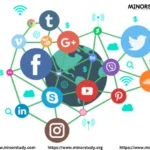10 Game-Changing Social Media Platforms Dominating 2025 You Can’t Ignore
Social media has become an inseparable part of modern life, transforming how we communicate, share, learn, and even do business. As of 2025, social media platforms continue to evolve rapidly, influenced by new technologies, shifting user behaviors, and global trends. Whether you’re a casual user, marketer, content creator, or simply curious about where the digital world is heading, understanding the most popular platforms today is crucial.
- 📜 A Brief History of Social Media Platforms
- 🔍 Fascinating Facts About Social Media in 2025
- 🗓️ Timeline of Social Media Evolution to 2025
- 🌟 The Top 10 Most Popular Social Media Platforms in 2025
- ❓ FAQs About Social Media Platforms
- Q: Which platform is best for businesses in 2025?
- Q: Is social media usage increasing or declining?
- Q: How do platforms handle privacy and misinformation?
- Q: Can social media be healthy for mental well-being?
- 🌍 Significance and Impact on Daily Life
- 💡 Important Points to Remember
- 🙏 Wishing for a Better Digital Tomorrow
- ✅ Conclusion: Social Media’s Power and Responsibility
In this detailed guide, we’ll dive into the history, facts, FAQs, timeline, significance, and daily life impact of social media. We’ll also reflect on how these platforms shape society and offer thoughtful wishes for a healthier digital future.
📜 A Brief History of Social Media Platforms
The story of social media dates back to the late 1990s and early 2000s:
1997: The launch of SixDegrees.com, one of the first recognizable social networks.
Early 2000s: Platforms like Friendster, MySpace, and LinkedIn gained traction.
2004: Facebook emerged, revolutionizing social connectivity.
2006: Twitter introduced microblogging and real-time updates.
2010s: Instagram, Snapchat, and TikTok changed content sharing with visuals and short videos.
2020s: Rise of live streaming, augmented reality (AR), virtual reality (VR), and AI-driven content personalization.
Today, social media is not just about connecting with friends but is a powerful tool for commerce, education, activism, and entertainment.
🔍 Fascinating Facts About Social Media in 2025
Over 4.8 billion people worldwide use social media, representing about 60% of the global population.
Mobile usage dominates, with over 90% of social media access happening via smartphones.
Short-form video content accounts for more than 70% of all social media engagement.
Artificial intelligence now customizes feeds so precisely that users often see highly personalized content.
Social commerce is booming, with platforms integrating seamless shopping experiences.
Privacy concerns and data regulations continue to challenge platform policies.
Virtual and augmented reality features are becoming common for immersive experiences.
Communities and niche interest groups thrive alongside mega-platforms.
Influencer marketing remains a multi-billion-dollar industry.
Platforms increasingly promote mental health awareness, battling toxicity and misinformation.
🗓️ Timeline of Social Media Evolution to 2025
1997–2004: Foundations built with early social networks.
2004–2010: Facebook’s rise and mainstream social networking.
2010–2015: Visual platforms (Instagram, Pinterest) grow.
2015–2020: TikTok and Snapchat popularize short videos.
2020–2025: AI, AR/VR, social commerce, and community building become dominant trends.
🌟 The Top 10 Most Popular Social Media Platforms in 2025
Facebook (Meta)
Despite competition, Facebook remains a major player due to its vast user base and integration with Meta’s VR ambitions.
Instagram
A leader in visual content, Instagram blends photos, reels, stories, and shopping features seamlessly.
TikTok
The short-form video powerhouse continues to grow, influencing music, culture, and viral trends.
YouTube
As the largest video-sharing platform, YouTube supports long-form content, live streams, and YouTube Shorts.
Twitter (X)
Known for real-time updates, Twitter is evolving into a broader communication and news platform.
LinkedIn
The professional networking site thrives with job seekers, recruiters, and B2B marketers.
Snapchat
Popular with younger demographics, Snapchat innovates with AR lenses and ephemeral messaging.
Reddit
A hub for communities and deep discussions on countless topics, Reddit maintains loyal engagement.
Pinterest
Focused on inspiration and discovery, Pinterest is strong in lifestyle, fashion, and DIY niches.
Discord
Originally for gamers, Discord’s community servers now cater to diverse interest groups globally.
❓ FAQs About Social Media Platforms
Q: Which platform is best for businesses in 2025?
A: It depends on your audience. Instagram, TikTok, and Facebook offer robust advertising and commerce tools, while LinkedIn excels for B2B.
Q: Is social media usage increasing or declining?
A: Usage is generally increasing, especially with mobile and video content trends.
Q: How do platforms handle privacy and misinformation?
A: Platforms invest heavily in AI moderation, user reporting, and compliance with regulations like GDPR and CCPA.
Q: Can social media be healthy for mental well-being?
A: Yes, with mindful use and by following positive communities, social media can support mental health.
🌍 Significance and Impact on Daily Life
Social media impacts daily life in profound ways:
Communication: Staying connected with loved ones worldwide.
Information: Instant access to news and educational content.
Entertainment: Streaming videos, music, and games.
Commerce: Buying and selling directly on platforms.
Self-expression: Sharing creativity and opinions.
Activism: Mobilizing social change and awareness campaigns.
Yet, it also brings challenges like screen fatigue, misinformation, and privacy risks.
💡 Important Points to Remember
Balance is key: Use social media consciously.
Verify information before sharing.
Protect your privacy settings.
Engage in positive and supportive communities.
Use social media as a tool, not a distraction.
🙏 Wishing for a Better Digital Tomorrow
“May social media unite us in understanding, empathy, and creativity.”
“May every user find safe spaces to express and connect.”
“May platforms evolve to support mental health and truthful communication.”
✅ Conclusion: Social Media’s Power and Responsibility
As social media platforms continue to evolve and dominate in 2025, they offer incredible opportunities to connect, learn, and grow. But they also come with a responsibility—for users to engage wisely and for companies to create safer, more positive environments.
Together, we can harness the power of social media to enrich lives and build stronger communities in this fast-changing digital age.








